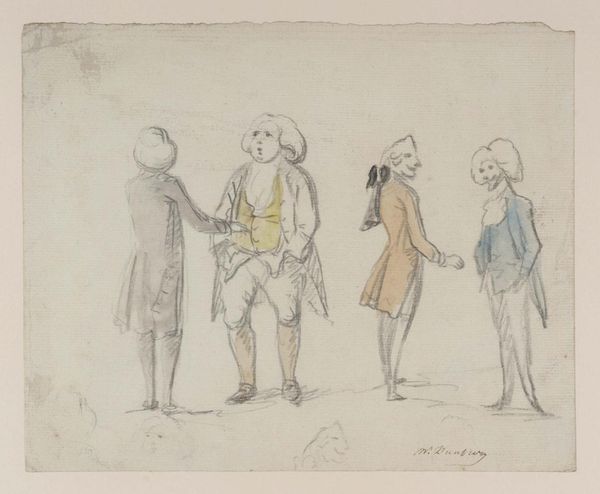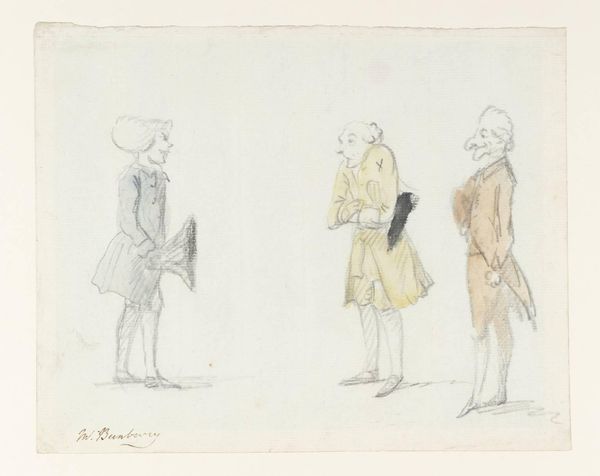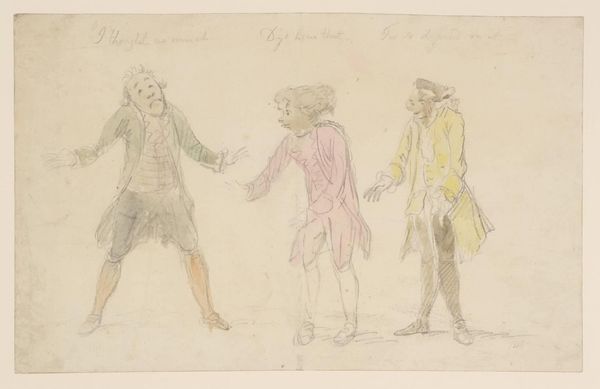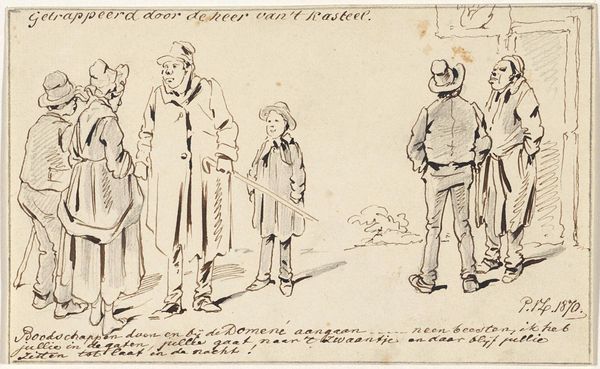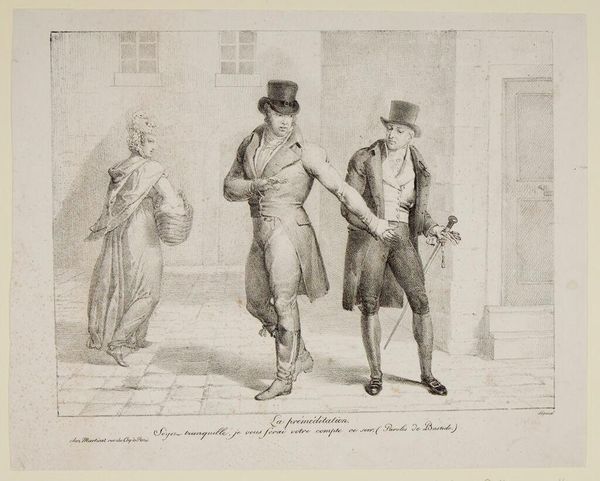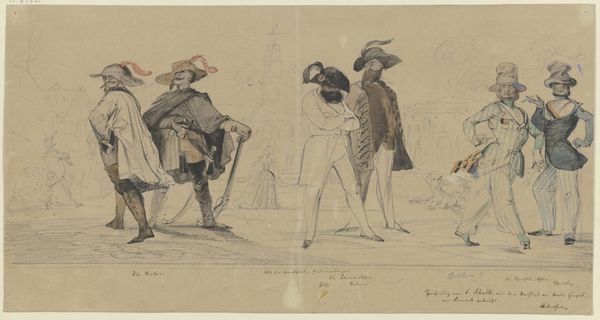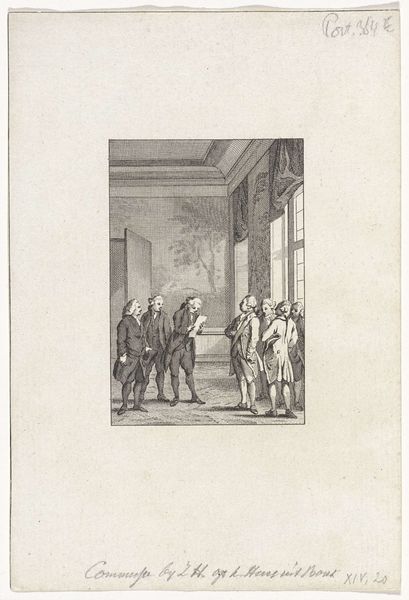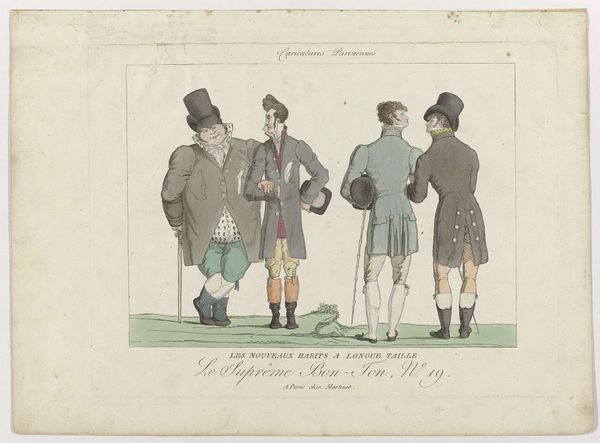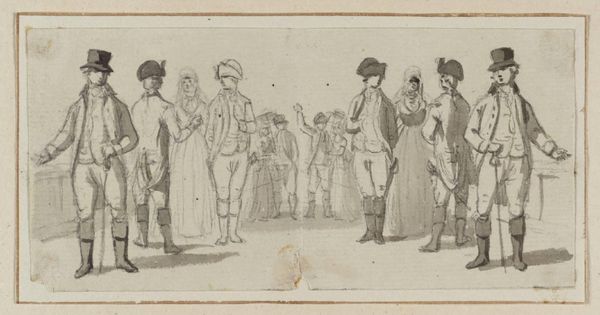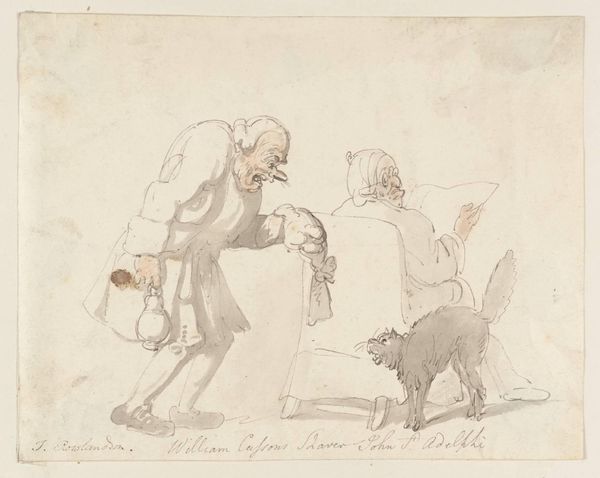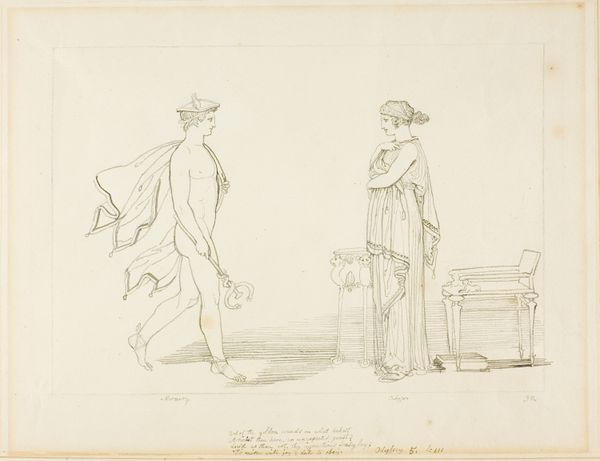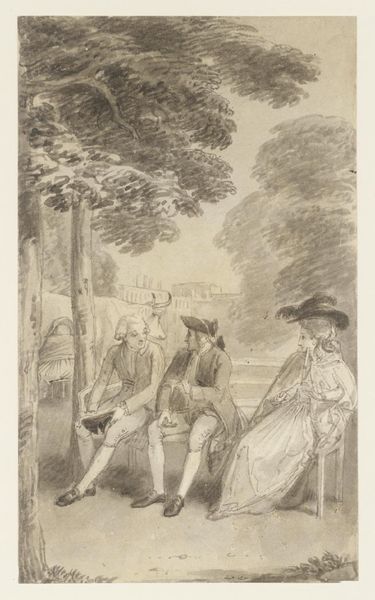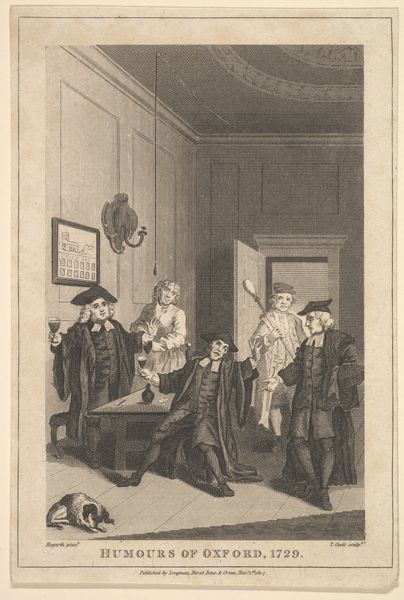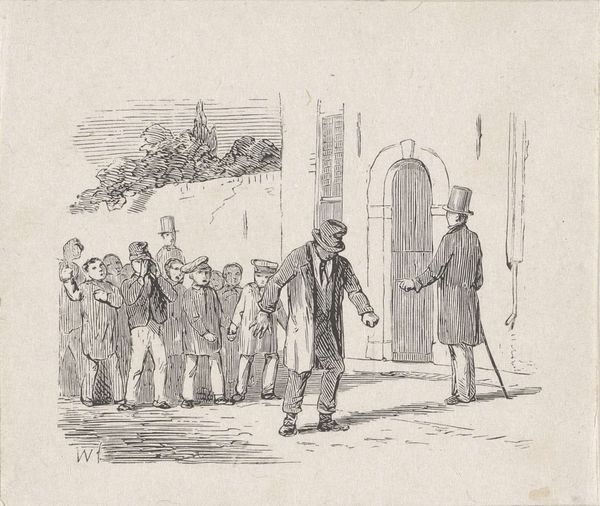
Dimensions: support: 223 x 305 mm
Copyright: CC-BY-NC-ND 4.0 DEED, Photo: Tate
Curator: This watercolor and graphite work on paper is entitled ‘Coffee is quite ready Gentlemen’ by Henry William Bunbury. Editor: Immediately, I'm struck by the caricature-like quality; the artist exaggerates the figures' proportions, emphasizing their social status, and perhaps satirizing the rituals of 18th-century male society. Curator: Bunbury was known for his satirical prints. Consider the societal context, this scene likely pokes fun at the leisure and privilege enjoyed by wealthy gentlemen. Editor: Exactly, the composition, with the figures processing toward an unseen source of coffee, feels performative. It's about displaying status and adhering to rigid social codes. The child on the floor adds another layer, highlighting class disparity. Curator: And observe the setting, it's a grand, classical interior yet rendered with quick, almost dismissive strokes. This contrast underlines the performative nature of their wealth. Editor: It’s a fascinating glimpse into a world defined by appearance and manners, leaving me to wonder about the accessibility of such spaces and rituals, and the gender politics inherent in such spaces. Curator: Indeed, the work’s enduring power is its ability to open up conversations about power, class, and social performance. Editor: It's a reminder that seemingly simple scenes can reveal complex power dynamics.
Comments
tate 6 months ago
⋮
http://www.tate.org.uk/art/artworks/bunbury-coffee-is-quite-ready-gentlemen-t08115
Join the conversation
Join millions of artists and users on Artera today and experience the ultimate creative platform.
tate 6 months ago
⋮
Henry Bunbury was an amateur caricaturist. He achieved wide fame during his lifetime for his witty and observant drawings inspired by contemporary manners. Bunbury was the son of a baronet and this, combined with his talent and sociableness, meant he was welcome in the houses of the great and the rich. This part of society was fertile ground for humour. Bunbury regularly visited the house of Sir Watkin Williams-Wynn in North Wales. This drawing is almost certainly set there. It shows Williams-Wynn, the central figure in a striped waistcoat, and his guests, being told off by a servant for not responding the first time to the call that coffee has been served. Gallery label, September 2004
